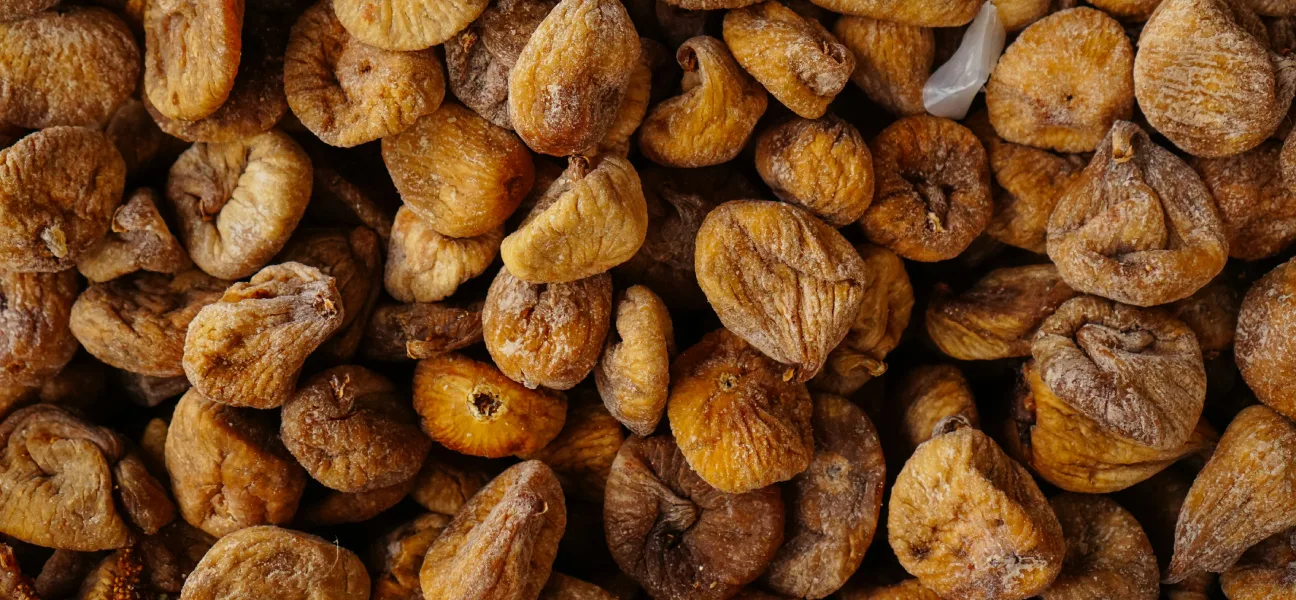
When buying dried figs for business use, private label products, or retail packaging, it is important to understand the different types like Lerida, Protoben, Baglama, Pulled, and Garland. Knowing these differences affects consistency, cost, and customer satisfaction. All these types come from the Sarı Lop fig, which is commonly grown in Turkey. However, their shapes, how they are presented, and their moisture levels are different. This can impact which type is best for certain uses.
In the dried fruits market, especially in major exporting countries like Turkey, Iran, and the U.S., figs are sorted into different categories. This sorting depends on their shape and how they are processed. Understanding these categories is important for buyers, as they influence the price, packaging, and uses of the figs.
Lerida figs are a well-known choice in the dried fig market. They are pressed by hand into a flat, disk shape and then stacked in trays or boxes. Their even appearance and balanced moisture make them ideal for packaging and for use in food service or bulk displays.
Protoben figs come from the same area as Lerida figs, but they stay in their natural shape. This means more figs can fit in each box. For buyers looking to get the most value for their money or buy in larger quantities, Protoben figs are a great option.
Baglama figs are hand-strung on cotton thread, typically in chains of 50 to 100 figs. This method is both traditional and visually unique, making them favored by specialty shops, ethnic retailers, and brands seeking an authentic display.
Pulled figs have a softer texture and more moisture. They are shaped flatter, making them great for immediate eating and high-end retail packs. Because of their softness and rich feel, pulled figs are often used in snack products or fancy fig assortments.

Garland figs are like Baglama figs, but they are arranged in circular loops instead of straight lines, which is why they are called "garland." They are not as common but are still good for holiday gifts, gift sets, or decorations.
Natural figs are the simplest and least processed fig types. They are dried without any alterations, making them a good choice for buyers who want minimal handling and lower costs. Since they are not shaped, they might look less uniform. However, this quality makes them more affordable and great for industrial use, fig paste production, or bulk repacking.
Choosing the right edible figs goes beyond moisture or looks; it's about matching the type to the use. If you need small snack packs, pulled or Lerida figs work well. For cost-effective options in large production, Protoben offers good volume and price. Baglama and Garland figs cater to special markets that appreciate tradition or presentation.
Here are a few guiding questions to help you decide:
Many fig species are grown around the world, but only a few are used for drying. And although they play a role in fresh markets, they play only a secondary role in the global dried fig trade. Nevertheless, the Sarı Lop fig is the most common for dried figs, especially from Turkey. This variety is preferred for products like Lerida, Protoben, and Baglama because it is large, has thin skin, and dries well.
Other popular varieties include:
These types are important in local or small markets, but when it comes to international business, most buyers prefer Sarı Lop figs. This is because they offer consistent quality, reliable processing, and a steady supply.
Nutrada connects food industry professionals with verified fig suppliers, providing bulk sourcing solutions for whole dried figs, fig paste, and processed fig products. Buyers can refine their search based on variety, origin, processing type, and certifications, ensuring they source the best figs for their manufacturing or retail operations. By leveraging Nutrada’s supplier network, businesses can streamline procurement and secure high-quality fig products efficiently.